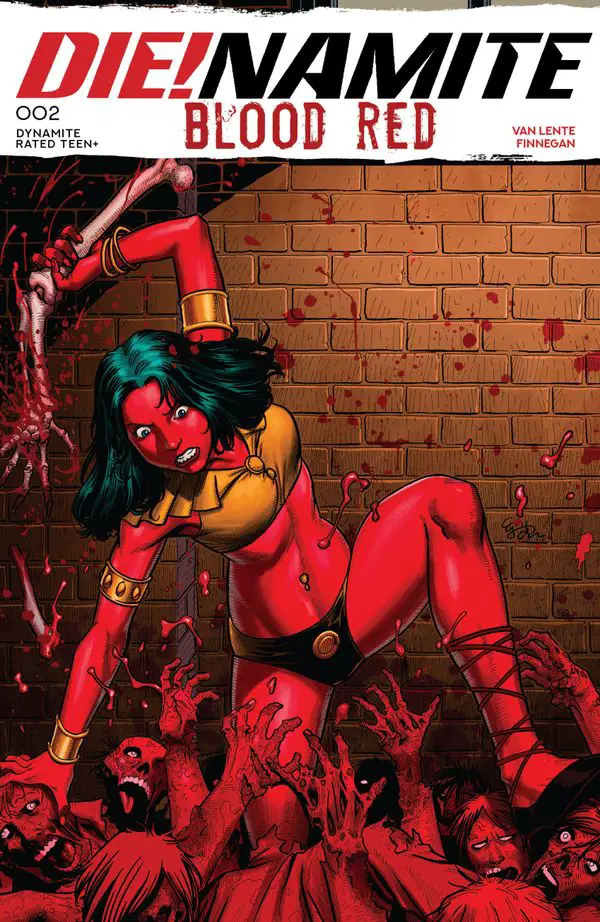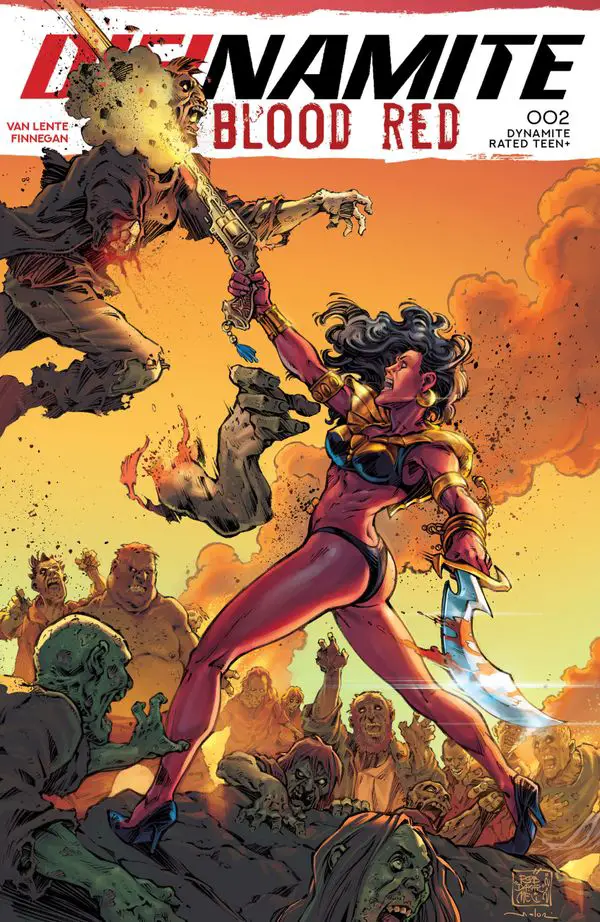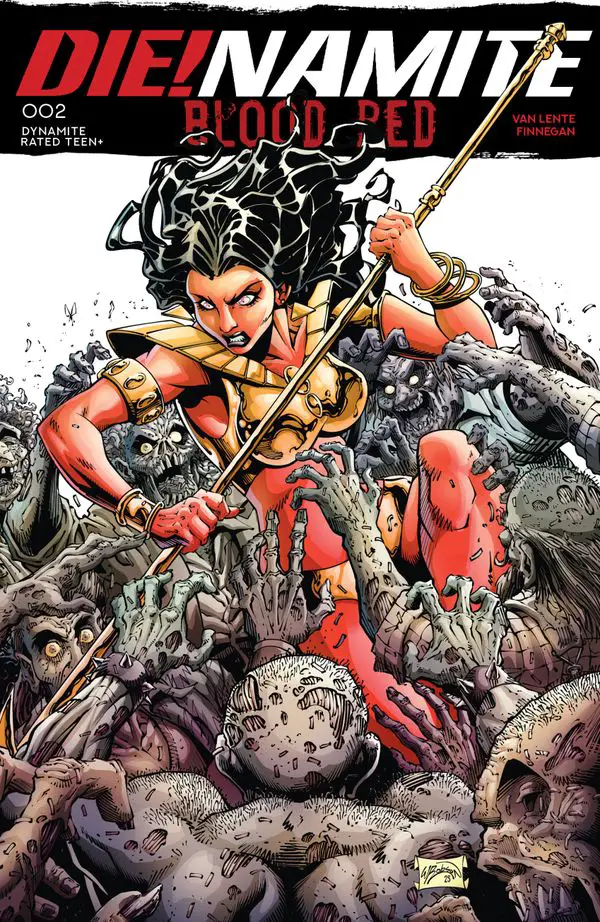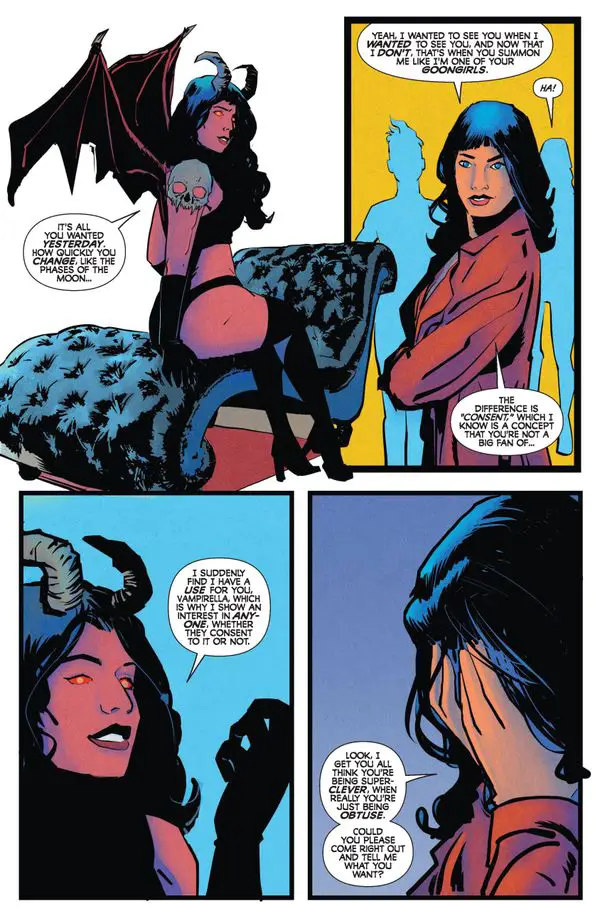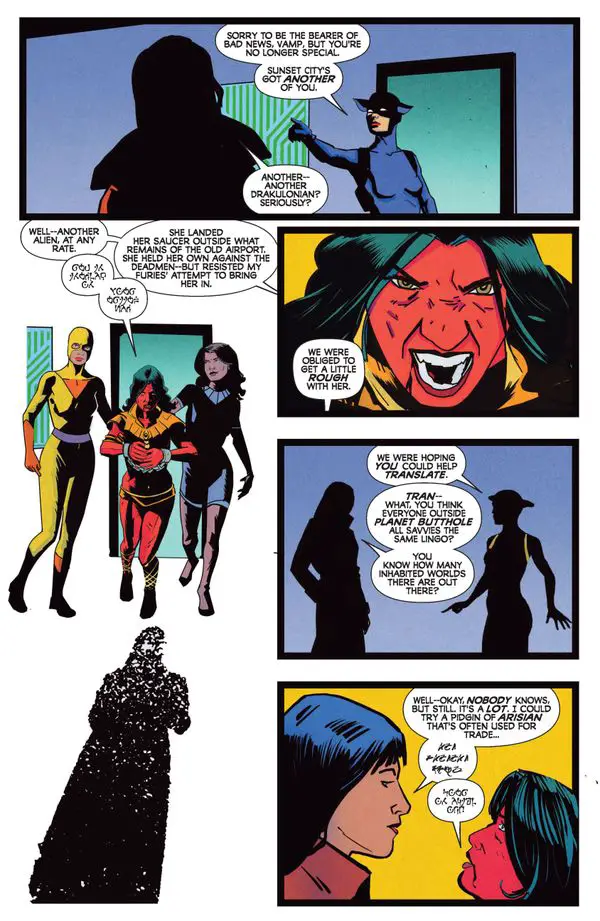DIE!namite: Blood Red #2, by Dynamite Comics on 11/12/25, returns with all-female alliances, Martian science, and fresh drama spilling over Sunset City’s barricades.
Credits:
- Writer: Fred Van Lente
- Artist: Marco Finnegan
- Colorist: Ellie Wright
- Letterer: Jeff Eckleberry
- Cover Artist: E.J. Su (cover A)
- Publisher: Dynamite Comics
- Release Date: November 12, 2025
- Comic Rating: Teen+
- Cover Price: $4.99
- Page Count: 22
- Format: Single Issue
Covers:


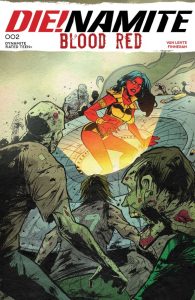
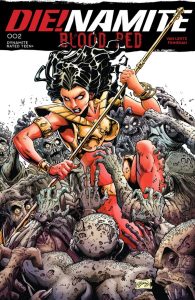
Analysis of DIE!NAMITE: BLOOD RED #2:
First Impressions:
From the first page, the comic doubles down on quick banter and brisk setup, wasting little time before diving into gnashing Deadmen and snarky heroines. The opening feels both immediate and impatient, promising new threats but refusing to linger on old ones. It leaves readers ready for more, but a bit wary about whether it will actually deliver.
Recap:
In DIE!NAMITE: BLOOD RED #1, Sunset City is the epicenter of the X-virus, a gendered epidemic transforming men into Deadmen while leaving women to rebuild and defend their turf. Pantha rescued Jessica from an ambush and delivered her to Purgatori’s feudal stronghold. Vampirella and Tristan, stranded on Earth after investigating the outbreak, struggle through cynical bureaucracy and back-room scheming, while Miss Fury enforces Purgatori’s rules. The issue closed as an unidentified UFO crashed near L.A.X., bringing new uncertainty and “Next: Saviouress from the Stars”—hinting at Martian troubles to come.
Plot Analysis:
Dejah Thoris, the Martian Saviouress, arrives in Sunset City aboard a battered saucer, facing off against Deadmen and locals alike. The chaos brings Vampirella, Purgatori, and Chastity into tense negotiations, their dialogue layered with sharp digs and thinly veiled threats. Dejah claims her science can cure the plague, identifying Taak as a rogue Kaldane responsible for the biological nightmare, with his lab at Hoover Dam as their target.
Purgatori exploits the news for leverage, sending Vampirella, Dejah, and a group of her “Furies” on a makeshift suicide mission to Hoover Dam. The team argues over intentions and hidden agendas, with Vampirella’s secret – her infected partner Tristan – dangling as additional motivation to find a cure. Trust fractures as telepathy exposes private dilemmas; the group’s alliances feel more transactional than heroic.
The middle act builds tension around Tristan’s infection and Vampirella’s desperation to save him. Dialogues alternate between biting sarcasm and reluctant teamwork, punctuated by Purgatori’s power plays and Chastity’s dry commentary. As the mission unfolds, stakes rise, emotional baggage piles up, and the cure grows tantalizingly close but never quite tangible.
The comic closes on a tense “road-trip” sequence toward Hoover Dam, setting up next issue’s inevitable showdown. Blunt exchanges, rushed action, and snappy asides lead the cast into Nevada as each struggles with their own secrets. Hints at betrayal and messy outcomes keep the tension sharp; resolution remains elusive but the hook is firmly set for the next installment.
Story
Fred Van Lente’s script maintains snappy dialogue and a brisk pace, never letting exposition outstay its welcome. The plot flows logically, cycling quickly through setup and conflict, but occasionally forces scene transitions with abrupt tonal shifts. World-building remains clever, relying on sharp personality exchanges to ground the increasingly convoluted plot. The dialogue’s punchiness propels even slower moments, though emotional depth sometimes surrenders to sarcasm.
Art
Marco Finnegan’s artwork manages clarity in character expressions and action layouts, but struggles with pacing during tense scenes. The compositions vary from detailed close-ups to sparsely rendered backgrounds, sometimes sacrificing mood for brevity. Ellie Wright’s color palettes enrich emotional tone, but cannot always salvage flat or rushed linework. Scenes meant for emotional impact often lose power to visual shortcuts or inconsistent anatomy.
Characters
The cast’s motivations are transparent, such as Vampirella’s urgency about Tristan, Dejah’s sense of duty, and Purgatori’s hunger for control, but development hinges largely on revelations and quick telepathic confrontations. Characters stay consistent in their barbed exchanges and personal stakes, though secondary players, like the Furies and Chastity, risk feeling utilitarian. Relatability arises from trauma and snark rather than genuine empathy, but the personalities are well-defined within their pulp roles.
Originality & Concept Execution
Mixing zombie apocalypse tropes with Martian science is a fresh take, driven by an all-female roster and the gendered plague twist. The issue succeeds in escalating the concept but stumbles as new sci-fi ideas pile on without enough narrative breathing room. The threat of Taak and the cure chase brings stakes, but some plot devices such as telepathy, hasty alliances, melodramatic reveals feel like shortcuts rather than earned escalation.
Positives
The comic’s standout aspect remains the dialogue: witty, biting, and precise, it establishes character and stakes within a few sentences. The blend of post-apocalyptic grit with sci-fi invention avoids rehashing standard zombie fare. Character motivations, while over-the-top, still latch onto believable desperation, and banter keeps each scene lean and energized. The varied color choices help navigate emotional ups-and-downs despite inconsistent linework.
Negatives
Artistic shortcuts in panel composition and anatomy diminish the tension and make chaotic moments feel visually bland. Scene transitions skip too rapidly between plot beats, occasionally leaving the reader disoriented. Emotional weight is sacrificed for rapid-fire wit, and inventive concepts, like interplanetary telepathy or Martian science, get brushed off instead of explored. Secondary characters may feel like props dragged along for expedience rather than narrative necessity.
Art Samples:
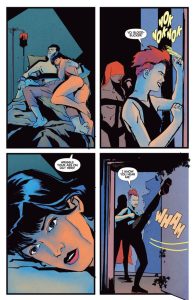
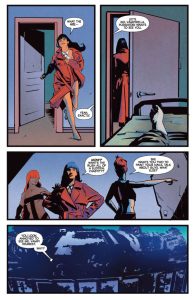
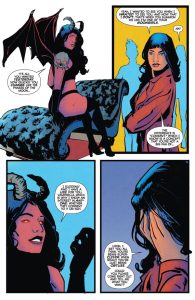
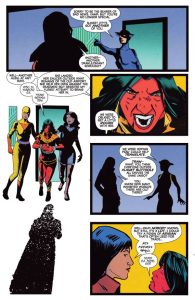
The Scorecard
Writing Quality (Clarity & Pacing): 3/4
Art Quality (Execution & Synergy): 2/4
Value (Originality & Entertainment): 1/2
Final Thoughts:
(Click this link 👇 to order this comic)
DIE!NAMITE: BLOOD RED #2 offers enough sharp banter and matriarchal apocalypse intrigue to reward loyal readers, but cuts corners in both art and emotional payoff. The sci-fi twist delivers novelty, yet sacrifices room for its own ideas to breathe. If your comic budget demands results, this issue won’t waste your time, but it may leave you wishing for more substance beneath the snark and spectacle.
We hope you found this article interesting. Come back for more reviews, previews, and opinions on comics, and don’t forget to follow us on social media:
If you’re interested in this creator’s works, remember to let your Local Comic Shop know to find more of their work for you. They would appreciate the call, and so would we.
Click here to find your Local Comic Shop: www.ComicShopLocator.com
As an Amazon Associate, we earn revenue from qualifying purchases to help fund this site. Links to Blu-Rays, DVDs, Books, Movies, and more contained in this article are affiliate links. Please consider purchasing if you find something interesting, and thank you for your support.


